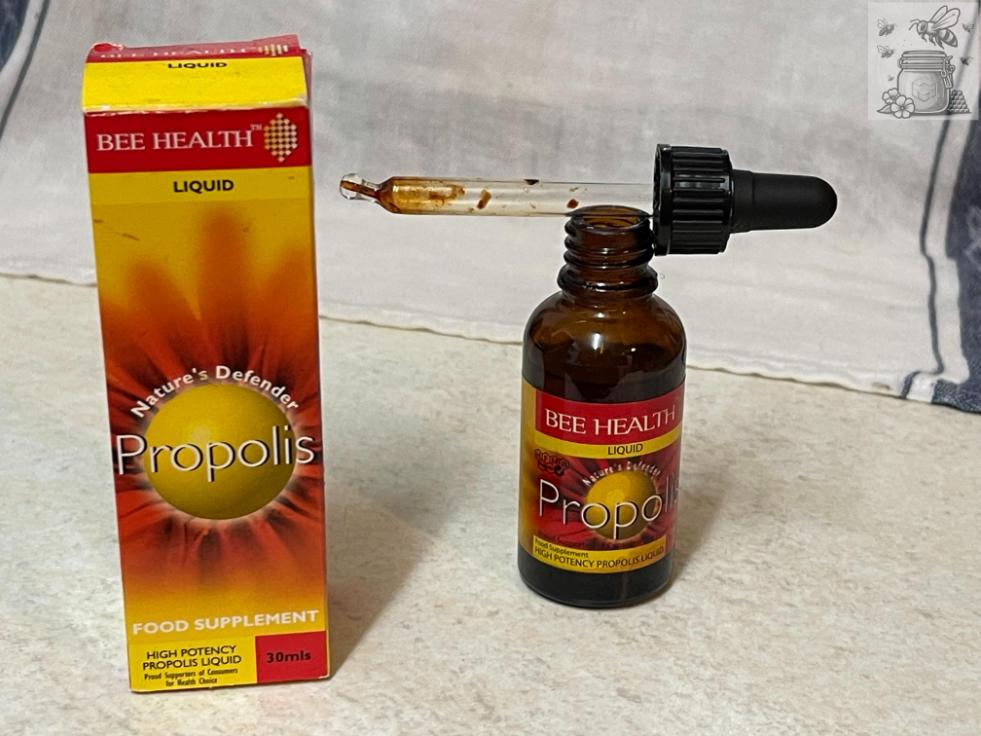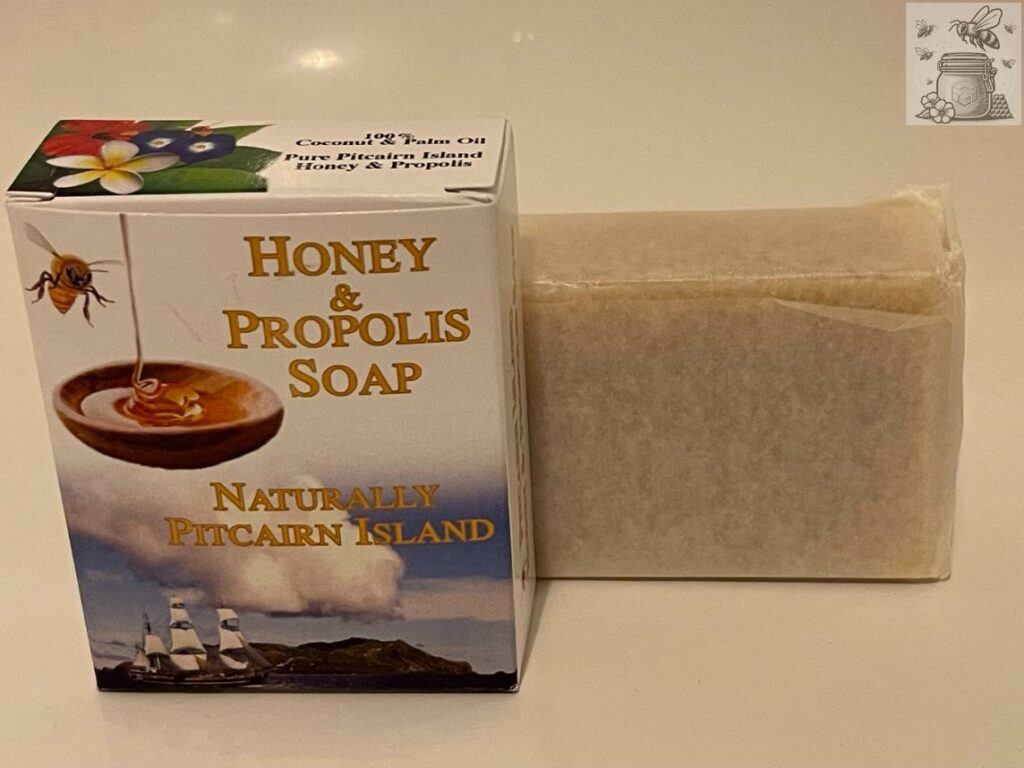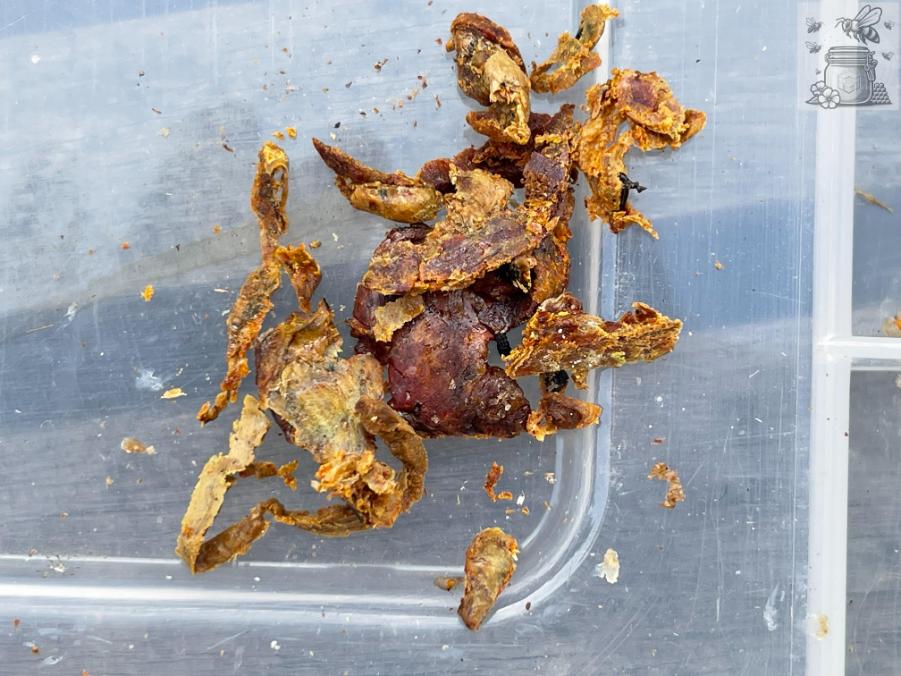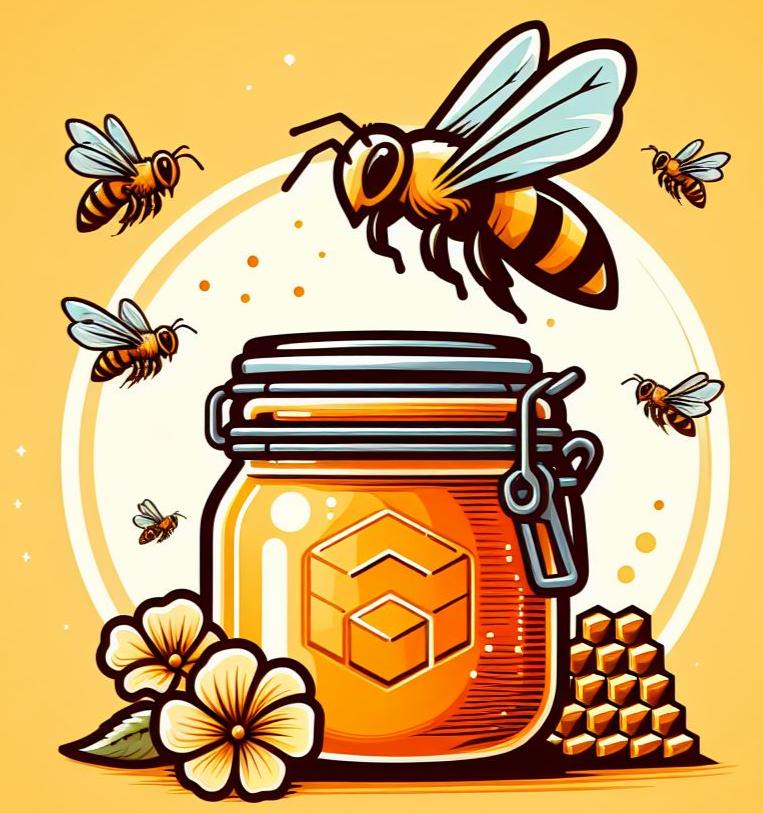In nature propolis plays a vital role in maintaining the health of a bee colony. It acts as an antimicrobial agent, preventing diseases from spreading within the hive.
This natural defense mechanism has piqued human interest, leading to the discovery and utilization of its health benefits in our own lives. Nowadays due to its antioxidant, antimicrobial, and anti-inflammatory properties propolis is used in various forms in natural remedies and health products.

This propolis liquid has been one of my favourite products for many years.
It still stands out as its consistency and ingredients differ from my home made products.
Though it is labeled as food supplement, for me it works well as antiseptic and also it promotes healing of cuts and inflammations.
Discover more about propolis chemical composition and its different beneficial properties.
Modern Applications of Propolis
Propolis has found its way into a myriad of modern applications, melding the ancient with the contemporary. In medicine, propolis is increasingly incorporated into pharmaceutical products. It’s used in throat sprays and lozenges for its soothing and antimicrobial properties.
Some formulations also utilise propolis in salves and ointments for topical application, leveraging its wound-healing abilities.
In the skincare and cosmetics industry, propolis has become a sought-after ingredient. Its benefits for skin health, such as promoting collagen production and reducing inflammation, make it a star player in serums, face masks, and moisturisers. And of course, people appreciate its natural origins and effectiveness.
Alternative and holistic medicine also embraces propolis. Many use it as a supplement to boost their immune system, thanks to its rich antioxidant content. Its diverse health benefits have earned it a place in dietary supplements — from tinctures to capsules — often marketed for enhancing overall wellness and vitality.
Propolis is also used for its potential in dental care. Its antimicrobial properties make it a valuable ingredient in natural toothpaste and mouthwash, promoting oral hygiene and combating gum disease. Research has shown that propolis can effectively reduce plaque accumulation and relieve symptoms of gingivitis.

Propolis versatility doesn’t stop there. It’s being integrated into everyday products like lip balms, soap and even shampoos, where its healing and protective properties can offer additional benefits.
How to Use Propolis Safely and Effectively
To make the most of propolis, it will help to understand the different forms available. It comes in various preparations, such as tinctures, creams, capsules, and even raw chunks straight from the hive. Each form has its unique applications and benefits.
When it comes to tinctures, these are alcohol-based solutions ideal for oral and external use. They are potent and versatile, often used for minor sore throats, skin irritations, or as a general immune booster. But it’s essential to follow dosage instructions carefully. Typically, a few drops under the tongue or diluted in water is sufficient.
Capsules offer a convenient way to consume propolis, especially for those who may not like the taste of tinctures. They are standardized in terms of dosage, making it easier to manage intake. Capsules are often recommended for daily immune support or to address specific health concerns.
Creams and ointments are perfect for topical use. These are applied directly to the skin to aid in wound healing, reduce inflammation, or treat skin conditions like eczema. Proper application involves cleaning the affected area first and then applying a thin layer of the cream. Consistency is key for optimal results.
Raw propolis can be chewed (but not swallowed) or used to make your own tinctures and salves. Its sticky nature can make it a bit challenging to handle, but my recipes are full helpful of tips.

It’s often favoured by those looking for the most natural and unprocessed form of propolis.
Personally I prefer to clean raw propolis (scraped from my hives and frames) first. I always do it following a very easy process.
Differences between Propolis Resin, Raw Propolis, and Propolis Extracts
- Propolis Resin vs. Raw Propolis:
- Propolis Resin: this is the original material collected by bees. It is a pure form of the sticky substance gathered from plants and mixed with a small amount of beeswax and bee secretions. It is unprocessed and serves as the building block for other forms of propolis.
- Raw Propolis: raw propolis refers to the propolis resin that has been harvested directly from the hive. It includes the resin along with other materials like beeswax, debris from the hive, and sometimes bee parts. Raw propolis is less refined than extracts but is slightly processed when compared to the pure resin, as it contains a mix of hive materials.
- Propolis Resin vs. Propolis Extracts:
- Propolis Resin: The unprocessed base material in its natural, sticky, and solid form. It has not been altered or purified and retains all the original compounds found in the collected resin.
- Propolis Extracts: These are purified forms of propolis, created by extracting the active compounds from the resin using solvents like ethanol, water, or glycol. Extracts are more refined, removing waxes and impurities, and are available in various forms such as tinctures, capsules, ointments, and powders. The extracts contain concentrated bioactive compounds, making them easier to use in supplements and topical products.
While propolis is generally safe for most people, it’s essential to be cautious if you have allergies, especially to bee products. Start with small doses to see how your body reacts. If you’re pregnant, nursing, or have underlying health conditions, consulting a healthcare provider before starting propolis supplements is advisable.
Being informed and mindful about how and when to use propolis ensures you can enjoy its full potential safely and effectively. Proper usage can lead to significant health benefits, making propolis a valuable addition to your wellness regime.
The Future of Propolis Research
Propolis is already a versatile and beneficial substance, but its full potential is still being unlocked. Researchers are continually exploring new applications and uncovering more of its health benefits. Current trends show an increasing interest in its antiviral properties, which opens the way for propolis to be used in fighting viral infections such as the common cold and even more severe illnesses.
Ongoing studies focus on understanding how propolis can enhance wound healing by stimulating cell growth and tissue repair. Some researchers are looking into its potential for treating chronic conditions like diabetes, particularly regarding its effect on blood sugar levels and diabetic complications. Innovations in extraction and formulation methods could lead to even more potent and targeted applications.
While much of the research so far has been promising, challenges remain. For instance, to standardise the composition of propolis products is tricky due to its natural variability. Also, more large-scale clinical trials are needed to fully understand the scope of propolis’s benefits and any potential risks.
On the whole the scientific community sees significant promise in this ancient remedy. As research progresses, we can expect to see new, innovative uses for propolis that go beyond traditional applications.
